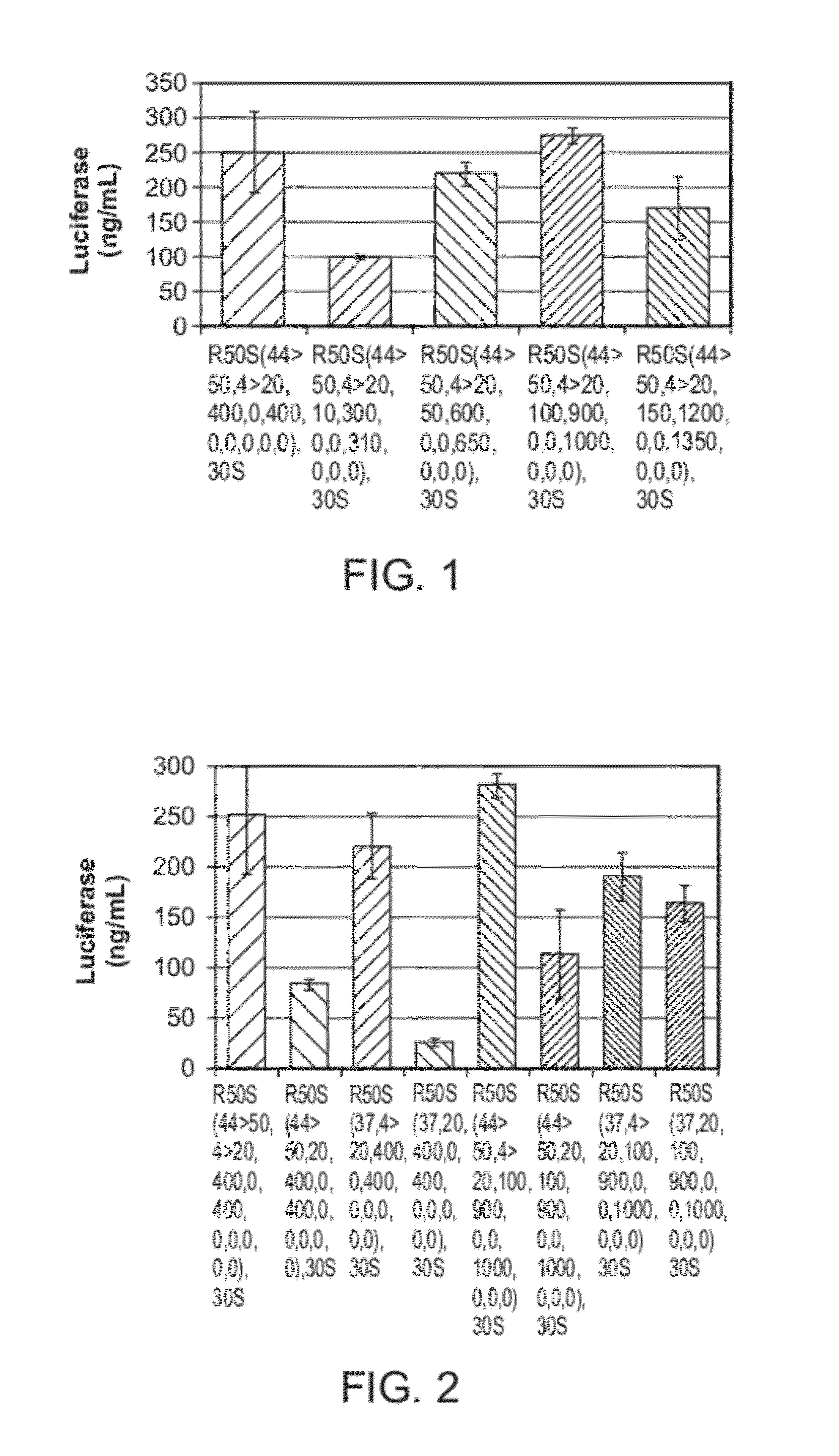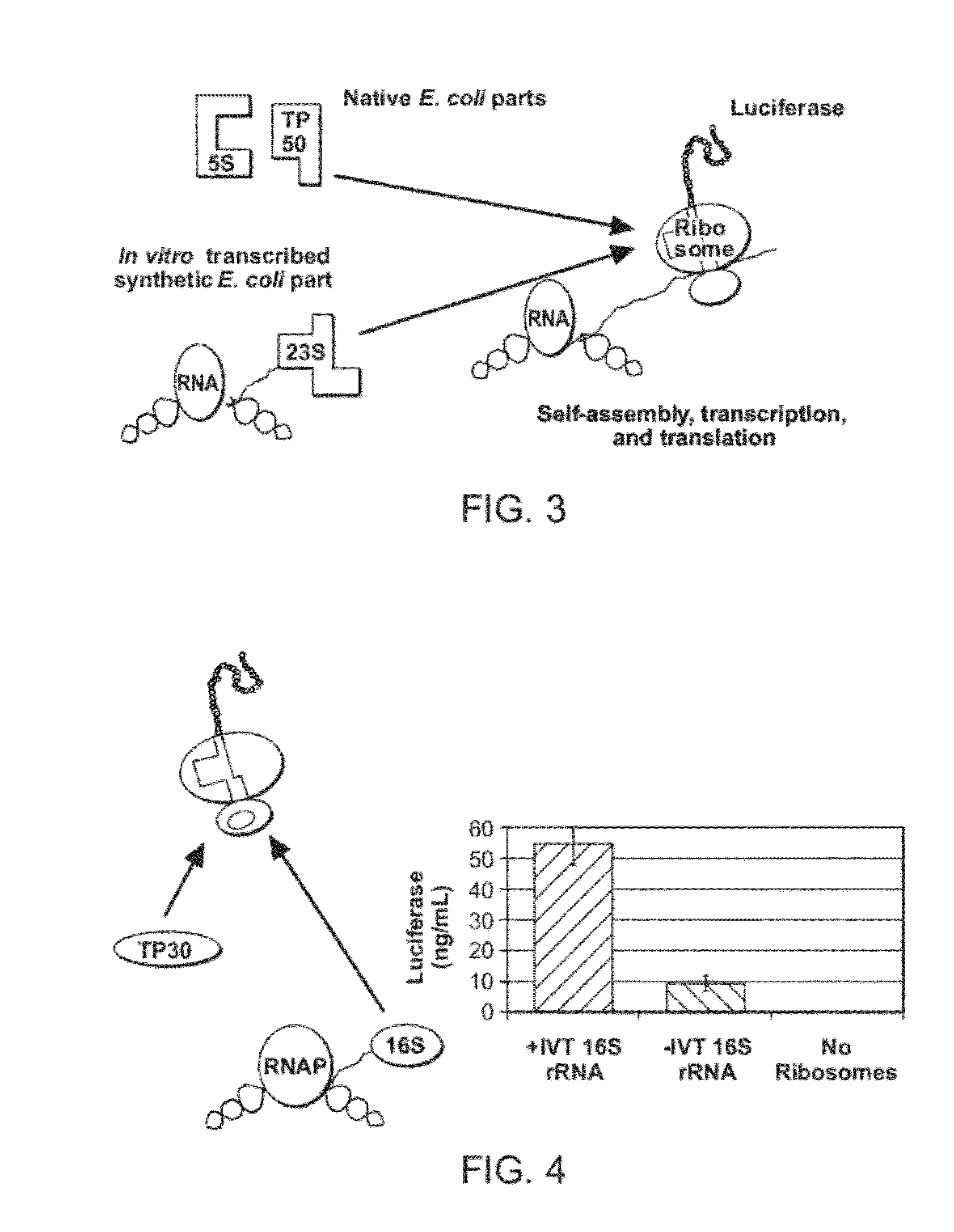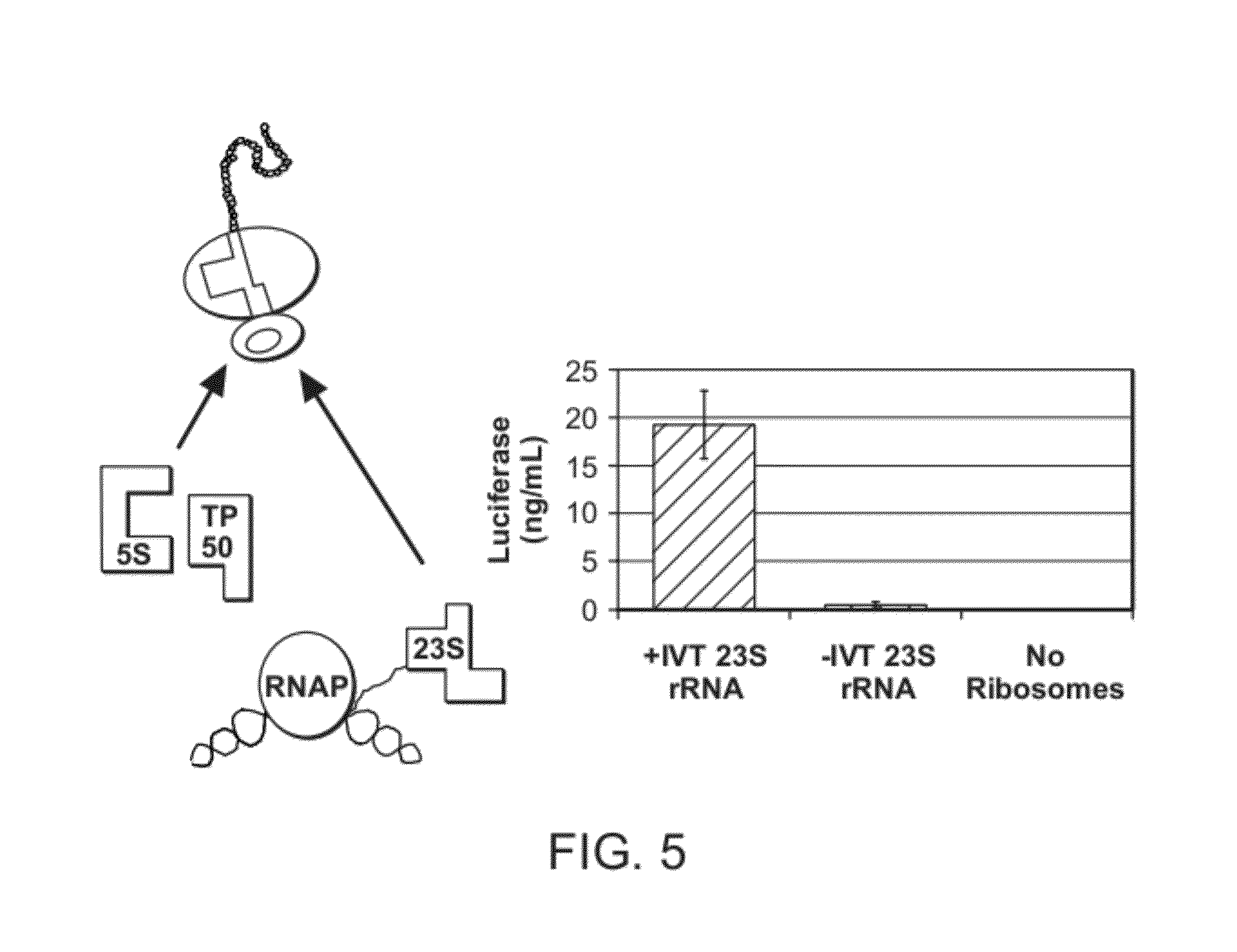Method of Making Ribosomes
a ribosome and ribosome technology, applied in the field of making ribosomes, can solve the problems of preventing the construction of such a system, unable to find the most salient feature of biology, and unable to synthesize and assemble,
- Summary
- Abstract
- Description
- Claims
- Application Information
AI Technical Summary
Benefits of technology
Problems solved by technology
Method used
Image
Examples
example i
Reconstituted Ribosomal Subunits
[0075]Experiments were performed to determine whether ribosomes could be reconstituted from their native parts, and whether reconstituted ribosomes could be used to make proteins. Ribosomes were reconstituted according to the methods presented herein. The function of reconstituted ribosomes was tested in an S150 crude extract-based combined transcription and translation system. A salt environment was used that mimicked the cytoplasmic environment. S30 crude extract systems were also used (Jewett, M. C., & Swartz, J. R. (2004) Mimicking the Escherichia coli cytoplasmic environment activates long-lived and efficient cell-free protein synthesis. Biotechnol Bioeng 86, 19-26). The S150 system was based on the PANOx-SP cell-free protein synthesis (CFPS) platform. The physicochemical environment of the PANOx-Sp system is a significant break from previous translation systems used to assess ribosome activity (Nierhaus, Supra). To initiate protein synthesis, a ...
example ii
Self-Assembly of Ribosomes from In Vitro-Transcribed rRNA
[0081]The following conditions were used for the translation system: PANOx-SP CFPS reactions were, in general, carried out in 1.5 ml Eppendorf tubes at 37° C. The standard reaction mixture contained the following components: 1.2 mM ATP, 0.85 mM each of GTP, UTP and CTP, 34 μg / ml folinic acid, 170.6 mug / ml E. coli tRNA mixture (Roche, Indianapolis, Ind.), 13.3 mug / ml pk7LUC plasmid (encoding the gene for luciferase but it can be any reporter gene), 100 μg / ml T7 RNA polymerase, 33 mM phosphoenolpyruvate, 2 mM each of 20 unlabeled amino acids, 0.33 mM NAD, 0.26 mM CoA, 130 mM potassium glutamate, 10 mM ammonium glutamate, 14 mM magnesium glutamate, 1.5 mM spermidine, 1 mM putrescine, 4 mM sodium oxalate, 57 mM HEPES buffer pH 7.4 0.6 Units / mL pyruvate kinase, and 0.24 volume of S150 extract. Reaction volumes were 15 μl. Accordingly, one embodiment is directed to reconstitution / self-assembly of ribosomes in one compartment and wit...
example iii
Discussion
[0088]Reconstituted ribosomes were generated that expressed full-length proteins, and ribosomes were reconstituted under physiological conditions. One compartment ribosome self-assembly was mimicked in vitro. Further, in vitro transcribed rRNA was incorporated into functional, synthetic ribosomes.
[0089]Further aspects of the present invention are directed to building the ribosomal protein genes required for in situ ribosome production, quantifying efficiencies of self-assembly, and developing selection strategies for evolving the ribosome. See also Forster and Church (2006) Molecular Systems Biology doi:10.1038 / msb4100090. Strategies for synthesizing library targets and self-evolving ribosomes are depicted in FIGS. 19 and 20.
[0090]Synthetic ribosomes are useful for querying biological questions. They can be used to test our understanding of how life works and to generate useful biological systems useful in a variety of applications. According to certain aspects of the inve...
PUM
| Property | Measurement | Unit |
|---|---|---|
| Temperature | aaaaa | aaaaa |
| Temperature | aaaaa | aaaaa |
| Molar density | aaaaa | aaaaa |
Abstract
Description
Claims
Application Information
 Login to View More
Login to View More - R&D Engineer
- R&D Manager
- IP Professional
- Industry Leading Data Capabilities
- Powerful AI technology
- Patent DNA Extraction
Browse by: Latest US Patents, China's latest patents, Technical Efficacy Thesaurus, Application Domain, Technology Topic, Popular Technical Reports.
© 2024 PatSnap. All rights reserved.Legal|Privacy policy|Modern Slavery Act Transparency Statement|Sitemap|About US| Contact US: help@patsnap.com










